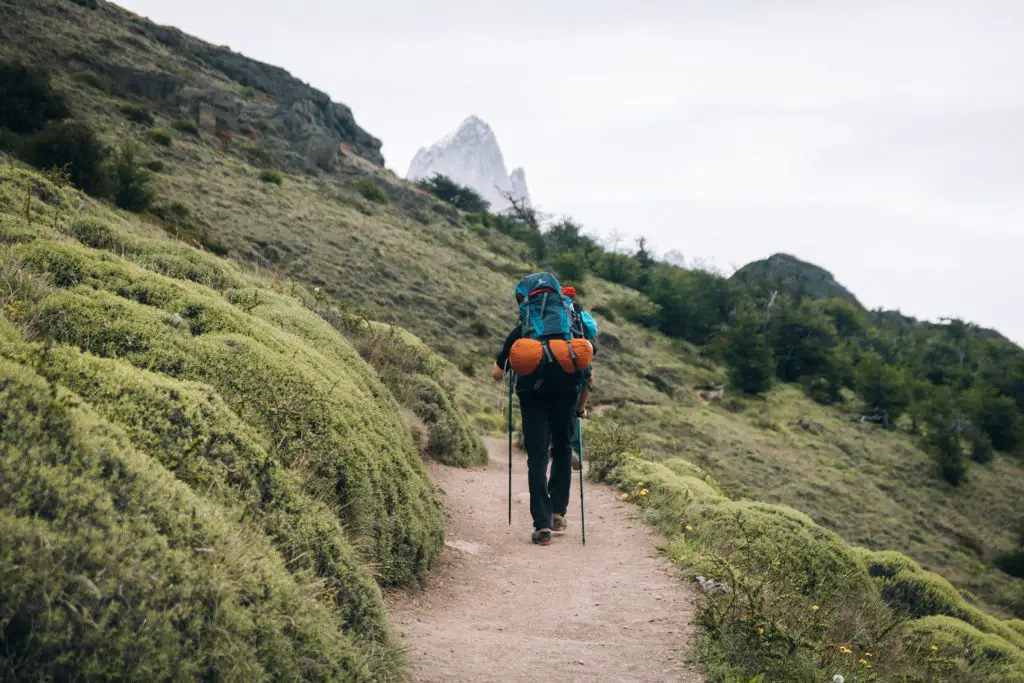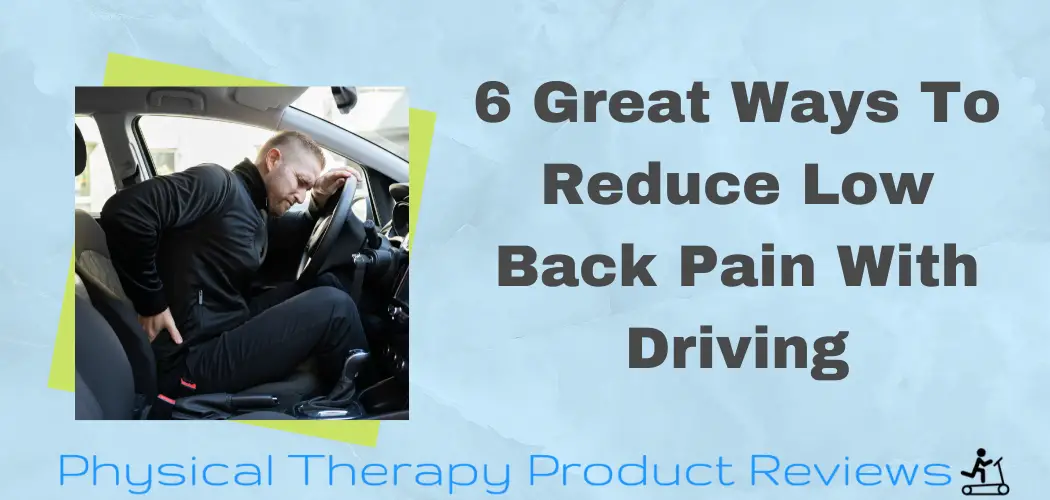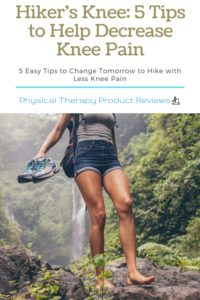 Hiking is a great way to exercise and allows us to experience the outdoors at a reasonable pace. Although tame compared to other sports, injury can still occur. When we feel pain, our bodies are warning us to approach an obstacle differently, or to slow down.
Hiking is a great way to exercise and allows us to experience the outdoors at a reasonable pace. Although tame compared to other sports, injury can still occur. When we feel pain, our bodies are warning us to approach an obstacle differently, or to slow down.
For hikers, one of the most common ailments affects the knees. Regardless of any trail level, the knee joint provides the suspension vital for a comfortable journey. If knee pain occurs or persists, as is common with avid hikers, it is best to address it as soon as possible. With the right knowledge and resources, maintaining the recreational lifestyle we know and love is possible.
What is ‘Hiker’s Knee’?
Unfortunately, there is no simple answer to this question. Rather than a disorder, ‘hiker’s knee’ is a generalization of symptoms. Medically, this colloquial term for knee pain, is known as Patellofemoral pain syndrome (PFPS). Manifesting as a dull ache behind or around the kneecap, the pain is usually temporary. To prevent aggravating symptoms, movements such as squatting or kneeling, going up or down inclines, or transitioning from sitting for a long period of time to standing, should be avoided. Considering most of these actions are prominent in hiking, the name fits.
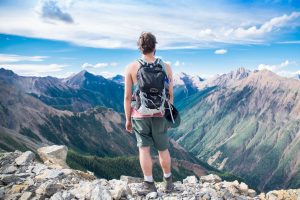 Patellofemoral pain syndrome is often due to alignment issues or overuse ‒ meaning one of the most effective resolutions is a change of activity.
Patellofemoral pain syndrome is often due to alignment issues or overuse ‒ meaning one of the most effective resolutions is a change of activity.
Alternatively, stretching, strengthening exercise and bracing have been shown to be effective in managing Hiker’s Knee. Non-steroidal anti-inflammatory drugs can also be used to reduce swelling and ease pain.
It really comes down to lack of strength and overuse. Most people think that they are strong enough to hike for long distances but the knee just can’t take that with leg weakness. Get Stronger and progress hiking mileage gradually.
Chondromalacia
In the event that symptoms are not resolved, or worsen, seeing a medical professional for diagnosis is critical. Left untreated, PFPS can progress into several disorders. One of the most common being Chondromalacia. It occurs when the cartilage between the femur and the underside of the kneecap softens and breaks down, allowing the thigh bone and kneecap to rub together. Not only is this painful, but can eventually cause deterioration of the patella itself.
Knee Anatomy is Key
To understand the physical reasons that we are experiencing knee pain, it helps to understand the anatomy of our patellofemoral knee joint. Knowing the proper function of our knees will also assist us in preventing injury.
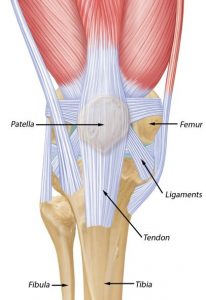
The patellofemoral joint is formed where our femur and patella connect. Our kneecaps slide between the two along a track, called the patellofemoral groove; which can be supported by a knee brace. This path allows the patella to travel lengthwise, as well as to tilt, rotate, and move side to side. Attached to the underside of the patella, is a cushion of articular cartilage, that allows the patella to glide smoothly in its groove over the femur.
Similarly, meniscus cartilage is found between the femur and tibia to prevent direct contact during movement, protecting sensitive nerves that assist in balance, stability, and weight distribution.
Located outside and within the joints, ligaments and tendons attach bone to bone, and muscle to bone, providing stability and limiting the range of motion. Surrounding the knee joint is a membrane bag, called the joint capsule, and fluid-filled sacs called a bursa. While the two function differently, both lubricate and nourish the knee joint to prevent painful friction and inflammation.
Hiker’s Knee: Five Tips for Preventing Pain on the Trail
There are a number of actions we can take to protect the various elements that form our knees ‒ one of the best being prevention. If PFPS is already present, these methods can still help alleviate the pain and prevent further damage.
1.) Hip and Glute Exercises
Our hips and glutes are the main points of stability when it comes to remaining upright. Weak gluteal and hip abductor muscles can present balance and posture issues, displacing our weight onto our knees for increased force and friction. By implementing the proper exercises, or using resistance bands, it is possible to strengthen these muscles and regain control of our pelvis‒ in turn helping our knees track and position correctly.
2.) Improve Quad Strength
Our quadriceps consists of four large muscles at the front of the thigh, that control our ability to stabilize and extend our legs at the knee. When strong, they act as a natural shock absorber and cushion our knees from excessive stress during activity. If they are weak, our knees experience an onslaught of weight they are unfit to handle, risking injury.
4.) Invest in Quality Boots
First and foremost, hiking boots should be correctly fitted, by a professional if need be. Too small or too big, and we may find ourselves adjusting our gait in a way that compromises natural knee extension and patella tracking. Quality means everything when it comes to protecting our bodies. The right boots will provide a cushion to absorb the impact of our feet hitting the ground, reducing the impact on our knees.
5.) Use a Knee Brace
There are a variety of styles that cater to different needs, including compression, ligament support, and stability. Skip the hassle of sorting through countless products, and view our list of hand-picked favorites straight off of Amazon. Hiker’s Knee typically response quite well to most knee braces.
Dealing with Painful Stairs After Ankle Replacement Surgery
Walking After a Total Ankle Replacement: Tips for a Successful Recovery
Exercises While Non-Weight Bearing After Ankle Replacement: Elevation, AROM, Leg Raises, and More
Ankle Pain with Stairs: Causes and Home Treatment Options
5 Common Mistakes You’re Making After an Ankle Sprain
6 Great Ways to Reduce Low Back Pain with Driving
Disclaimer: The information provided in this post is for educational purposes only. This is not a substitute for a medical appointment. Please refer to your physician before starting any exercise program.
